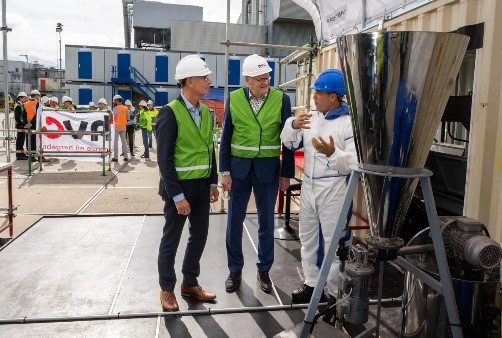Process & contact
RubiPhos® (TTBS)
Member of ESPP
Updated 5/2024
Input materials
Sewage sludge mono-incineration ash, from sewage works using biological and/or chemical P-removal
Low grade phosphate rock.
The process could also be adapted to intake other phosphate-containing secondary materials such as dewatered sludges, vivianite, struvite, meat and bone meals, ashes, …).
Minimum dry matter content of input material: 20% DM.
Output products
Phosphoric acid: ≥10 % P2O5 before concentration
Levels of heavy metals are all below 1 ppm: Cd, Pb, As, Zn, Cu, Ni, and Cr, while Hg is <0.1 ppm.
Levels of iron are < 50 ppm.
Phosphoric acid can be processed to purified acid, phosphate salts, fertilisers, etc.
The objective is to separately recover iron or aluminium in aqueous solution, magnesium sulphate, potassium sulphate, and use remaining residues in the construction industry.
To date: iron sulphate solution has been recovered as 7% aqueous solution, with levels of heavy metals below <5ppm for each heavy metal
To date, residue is a solid with 70% dry matter content containing 25% sulphate, 30% silicate.
Process description
Wet process based on strong acid (sulphuric acid or hydrochloric acid) digestion of input material, followed by the filtration of precipitated insoluble materials.
Iron is separated by selective acid digestion. Magnesium and potassium are separated by DD/NF membrane.
The P recovery yield is >90%
Removal of heavy metals is >95%. The residue is free of heavy metals. Heavy metals are precipitated and concentrated as a heavy metals cake as hydroxyde or sulfide
Operating status
Successful pilot operations in our Belgian facilities and in the Netherlands at Dordrecht with 12.5 kg/h input of sewage sludge incineration ash. Pilot operated in continuous mode for up to 200 hours. 2 tonnes of fly ash have been processed to date.
A short movie is available at https://www.youtube.com/watch?v=U6swQIkazVA
